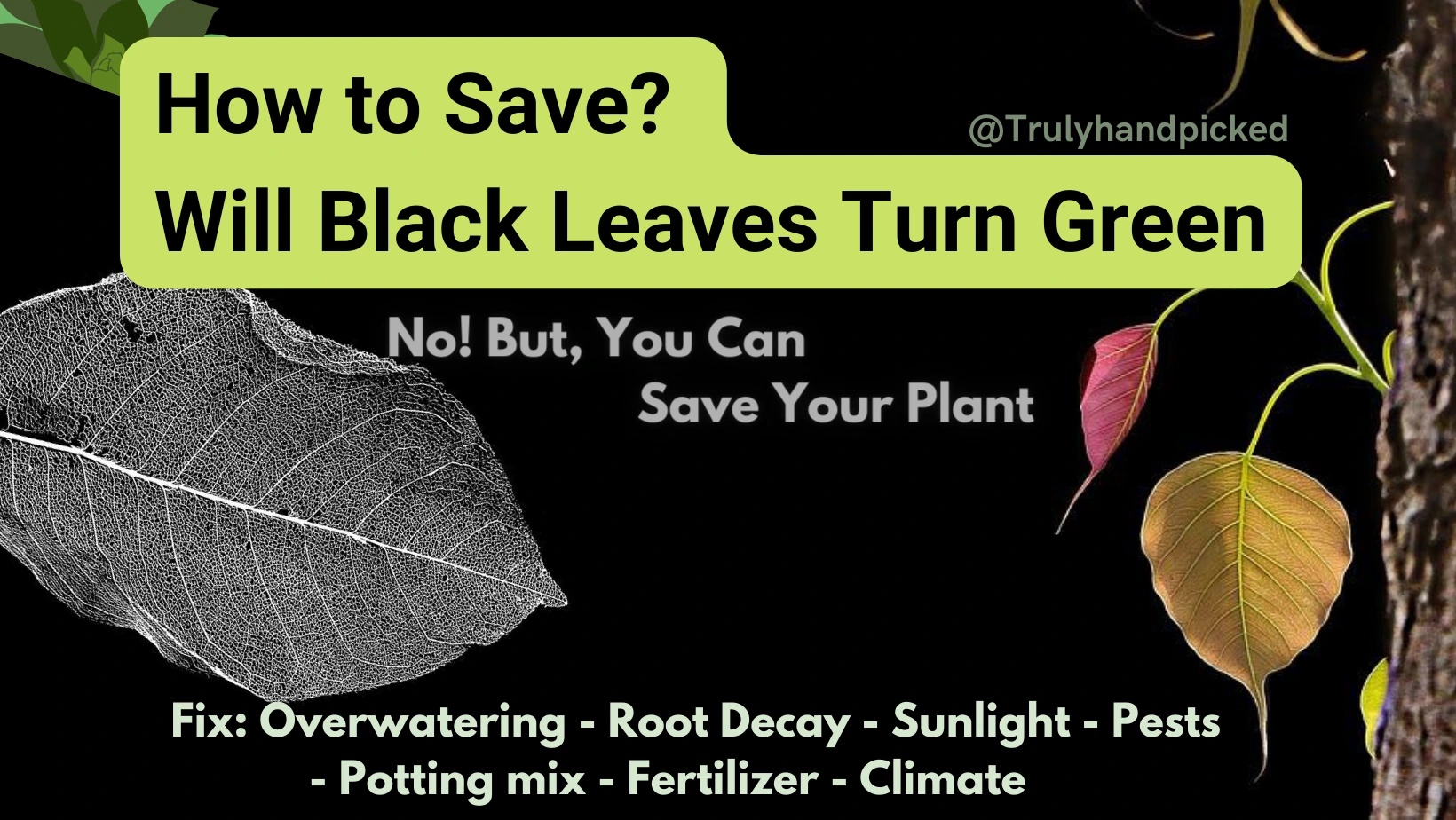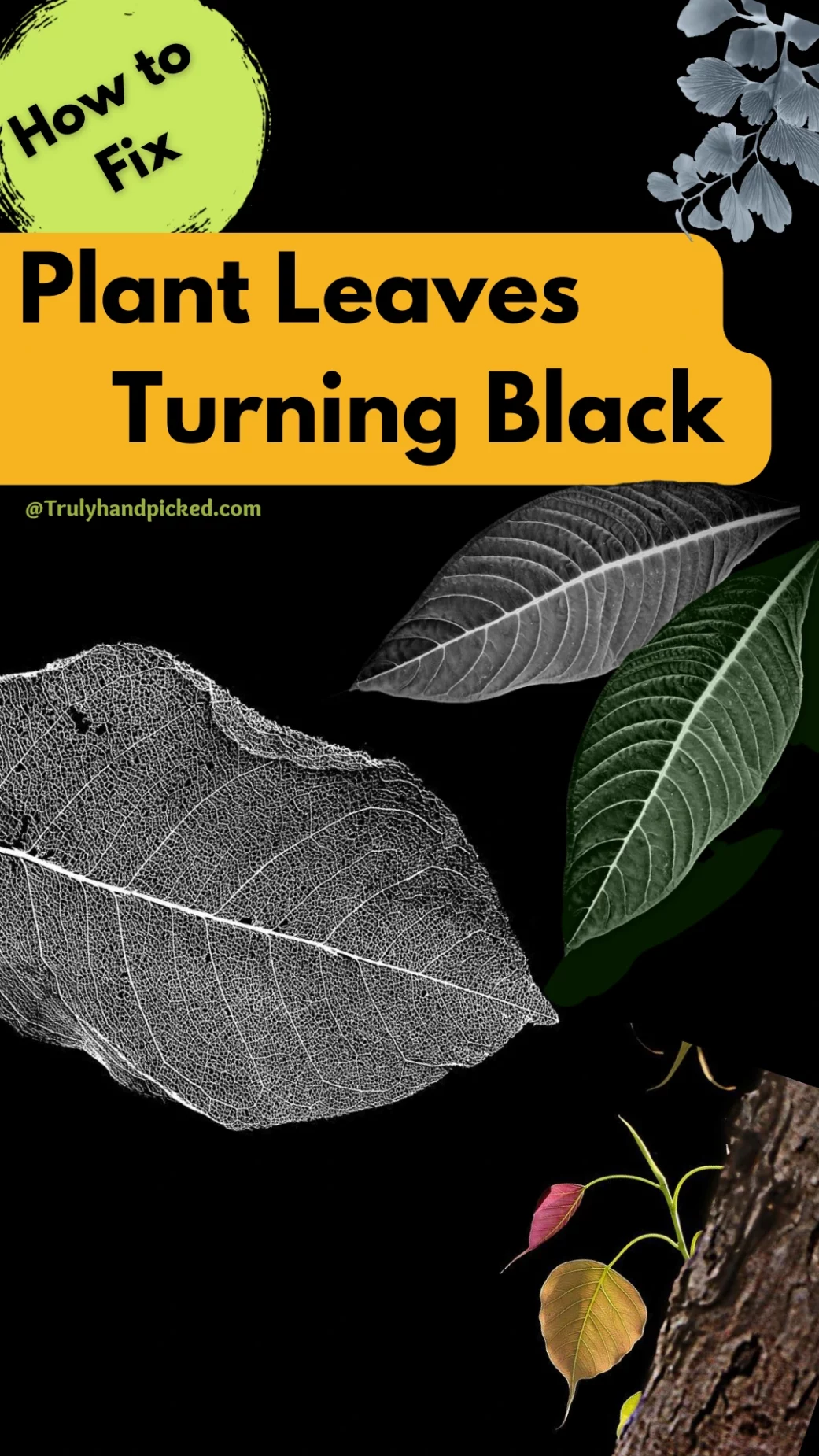Leaves are better to be green for eternity. No matter whether you are growing a big-foliage plant or a tiny-leaf shrub, they always seem appealing while grown in a striking green shade.
Unfortunately, sometimes we find that the leaves of our plants can’t stay green and appear unhealthy for a while. Be certain that your plant is suffering from some caring issues.
Remember that plants never grow black leaves all of a sudden. If your plant has been going through some interruptions for a long, it will start having leaf discoloration.
After that, gradually black leaves would appear. Here are some probable reasons why a plant could have black leaves and how to treat this problem expertly. Let’s check them out, and say goodbye to the unhealthy foliage from your plant evermore-
Reasons: Why Do Plant Leaves Turning Black
Indoor plants usually suffer more from this issue than outdoor plants. Some common causes always lead this unhealthiness to our favorite houseplant undefinably. Some most typical causes of plant leave turning yellow are-
Watering Issue:
Improper watering considers one of the major causes of providing black leaves in a houseplant. The different plant needs different types of water level to thrive.
You must be concerned about that percentage and water accordingly. If you overwater your plant, it will initiate root decay in your plant.
On the other hand, if you keep your plant dehydrated for long, it will make the leaves dry. Dry leaves turn brown first and then, go black eventually.
Inadequate Light:
Houseplants are particular about their light needs as well. Some grow best under direct light, while a few do well under filtered sunlight.
In both cases, they prefer adequate sunlight accurately. If you place them under full sun exposure or full shade without comparing their actual light needs, this may happen.
So, too much scorching light and full shade both invite black leaves on a plant, depending on the species of houseplant you pick.
Insufficient Fertilization:
Like humans, plants also need to be nutrified to stay healthy. You have to give fuel to your plants to let them thrive naturally.
But, sometimes, a little misconduct in their feeding schedule can lead to this black leaves issue in your plant. Don’t, feed your plant more than its actual needs or keep them unfertilized for long.
Any kind of mishaps in their feeding schedule can drag root burn in your houseplant. This can drive the black leaves problem to your plant within a few whiles.
Frequent Temperature Fluctuation:
Temperature is one more crucial part of maintaining a healthy gardening session. A different plant needs different sorts of climate to thrive well.
You must provide your growing plant its required growing temperature according to its flexibility level. If you keep your plant under low or extremely high temperature for long, it will have leaf discoloration and then, black leaves soon.
Try not to let the temperature fluctuate either during the entire growing session of a plant, to keep the black leaves problem at bay.
Left to Curl in Diseases:
If you stay negligent towards the diseases of your growing plant, it will invite the black-leaf issue in your plant shortly.
Sometimes, houseplants get incorporated by some unwanted bacterial or fungal issues. Using unsterilized garden tools, old potting soil, pots with a poor drainage system, etc. are some common reasons for such problems.
Unfortunately, if you don’t take proper remedies to your plant after detecting those issues, your plant will have this black leaves crisis soon.
Untreated Pests or Bugs Issue:
Different plants allure different kinds of insects. However, aphids, mealybugs, spider mites, beetles, etc. are some common pests that hit utmost growing plants for the fleshy stems or crunchy leaves.
If you don’t treat those nuisances instantly at their first appearance, they will make your leaves ugly. Eventually, untreated attacks of these insects can turn the healthy leaves of your plant black after some time.
Staying Inattentive:
Above all, staying inattentive towards your plant could have dragged it towards the consequence of black leaves, unavoidably.
Sometimes, some gardeners set a proper water plant, fertilization schedule, pruning session, repotting period, etc. previously, and don’t check twice the health of their plant ever.
Do not make this mistake ever with your plant. Need of each plant changes from time to time, thus, following a pre-set schedule blindly can damage the foliage of your growing plant noticeably and bring this black-leaf issue inevitably.
How Do You Fix Black Leaves on Plant?
Once you sense that a mild discoloration is happening with your plant, try to take the curing methods immediately. This way there would be possible chances of recovering those black leaves in their previous form. The best methods to fix black leaves in a plant are, as follows-
- Stop overwatering your plant immediately and do not let it dehydrate either. Try to check its watering needs closely and water accordingly
- Check for the root decay and repot it instantly, if you detect any sign of root rot in your plant ever
- Validate the drainage system of your plant and change the planter as well as the potting mix, if you find any problem with this
- Place your plant in a bright spot with a lot of sunlight, if you find that your plant is suffering from low light. On the contrary, keep the planter away from direct sunlight immediately, if you find that your plant has sunburn
- Cut off the black leaves as soon as possible, to hold a preferable look for your plant, and let the rest leaves be green as well. Sometimes healthy leaves turn black automatically if they get contacted with the unhealthy black leaves for long
- Maintain the best suitable temperature for your plant using a temperature measuring device. Usually, any temperature between 55° to 75° F is considered tolerable for the utmost houseplants and helps the plant to recover fast
- Feed your plant with high phosphorus fertilizer, to reduce the possibility of the black-leaf problem effectively. Try to use a diluted form of any fertilizer and water your plant thoroughly before fertilization
- Get rid of any disease or pest-bug issues out of your plant in the first place. Give your plant a good rinse with neem oil or soapy water. Wipe their leaves gently with rubbing alcohol or rinse your plant with a flush of water instantly, after detecting any black leaf on them
- Change the soil or planter immediately, if you find any kind of bacterial or fungal infestation there. Repotting is the most effective trick to slow down the rate of black leaves and cure them gradually
- Finally, use well-drained soil along with a pot with a great draining system to keep the drainage quality perfect all the time. This way you can keep the roots healthy and hold the probability of the black leaves problem at bay.
How To Avoid This Plant Leaves Turning Black Issue:
In one line just do the opposite of what’s listed in the reasons for your plant leaves turning black.
Schedule Watering As the Plant Needs:
- Water your plant according to their exact needs
- Let the soil dry between watering
- Use a watering can or measuring cups before watering to be certain about the quantity
Make Sure It Gets Enough Sunlight:
- Place your planter according to the light requirements of your plant
- Provide 6-8 hours of bright but indirect sunlight daily, in general
- Keep your plant away from the scorching afternoon sun to avoid sunburn
- Differs from plants with large foliage to spiky leaves, tiny leaves to cactus and succulents
- Succulents and Cactus love medium sunlight to bathing in peaking sunlight hours
- House plants will need partial sunlight, so that doesn’t scorch their leaves to turn black again
Only Feed Fertilizers with Plant Size and Need:
- Feed your plant according to their nutrition needs
- Avoid commercial fertilizers and go with the organic ones, for the utmost times
- Avoid overfertilizing your plant and feeding them during the winter season
Save it From Dormancy:
- Keep your plants away from open windows
- Save your plants from cold drafts
- Don’t let your plant scald outside the house during the summer seasons
Maintain Temperature and Humidity Levels:
- Keep the temperature moderately warm with an upward humidity level
- Maintain growing temperature between 60° to 85° F for the utmost houseplants
- Never let the plant stay in a spot, which has a temperature fluctuation issue
Attend Diseases and Pests Asap:
- Check for the pests or bugs or fungal or bacterial infestation closely
- Apply possible remedies instantly, once you detect any of them on your plant
- Pick the homemade remedies more over high-chemical-based commercial solution
Systematic Pruning and Repotting:
- Prune your growing plant once a month with fully sterilized tools only
- Cut off any discolored and infects sections of your plant in this session
- Make the repotting session of your plant consistent, depending on its growth rate
FAQ: Plants Turning Black
Is It Possible to Turn Those Plant Leaves Green Again?
Fortunately, leaves can turn green again from black with proper remedy methods. Just make sure you can detect them at their earliest stage and cure the actual cause of this issue from its root.
Does Cutting Off Black Leaves solve The Issue?
Cutting black leaves out of your plant can hold the problem or reduce the speed of blackening for a while, but can’t solve the issue at all. You have to take curing methods to get rid of this issue effectively.
Pinterest Image: How to Save your Plant – Leaves Turning Black


